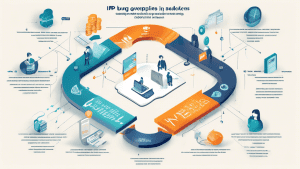Efficient Strategies for Stakeholder Engagement
Stakeholder engagement is a critical component of any successful project or business strategy. Engaging stakeholders effectively ensures alignment, fosters collaboration, and drives the successful execution of projects. Whether stakeholders are employees, customers, partners, or the community, effective engagement can have a significant impact on outcomes. This article explores various strategies for effectively engaging stakeholders.
Understanding Stakeholders
Before diving into engagement techniques, it is essential to understand who stakeholders are. Stakeholders can be classified into several categories:
- Internal Stakeholders: Employees, managers, and owners within the organization.
- External Stakeholders: Customers, suppliers, investors, government bodies, and the local community.
Each category has unique interests and influence on the business, which requires tailored engagement strategies.
Identify and Prioritize Stakeholders
The first step in effective stakeholder engagement is identifying and prioritizing stakeholders based on their influence and interest. This can be achieved through stakeholder mapping, a process that visualizes stakeholders on a matrix based on their power and interest in the project.
Categories often include:
- High power, high interest
- High power, low interest
- Low power, high interest
- Low power, low interest
Prioritizing stakeholders helps in allocating resources and focus towards those who have the most impact on the project’s success.
Communication Planning
Developing a communication plan is vital for engaging stakeholders. The plan should outline:
- Objectives: What do you want to achieve with your communications?
- Messages: What key messages do you want to convey?
- Channels: How will you deliver your messages (meetings, emails, newsletters, social media, etc.)?
- Frequency: How often will you communicate with each stakeholder group?
A robust communication plan ensures that stakeholders are well-informed and feel valued throughout the project lifecycle.
Engagement Techniques
Regular Meetings and Updates
Regular meetings, both formal and informal, are crucial for keeping stakeholders informed and engaged. Meetings provide a platform for discussing progress, addressing concerns, and gathering feedback.
Workshops and Collaborative Sessions
Workshops and collaborative sessions encourage active participation and input from stakeholders. These sessions can be used for problem-solving, brainstorming, and co-creating solutions, ensuring that stakeholders feel a sense of ownership over the outcomes.
Surveys and Feedback Mechanisms
Implementing surveys and feedback mechanisms helps in gathering insights and suggestions from stakeholders. By actively seeking their opinions, organizations can make informed decisions that reflect stakeholders’ needs and preferences.
Transparent Reporting
Transparency in reporting project status, challenges, and successes builds trust with stakeholders. Regular reporting keeps stakeholders updated and demonstrates the organization’s commitment to accountability and openness.
Building Relationships
Effective stakeholder engagement goes beyond mere communication; it involves building strong, trust-based relationships. This can be achieved through:
- Active Listening: Listen to stakeholders’ concerns and suggestions attentively, showing that their input is valued.
- Empathy: Understand stakeholders’ perspectives and address their needs empathetically.
- Consistency: Consistent engagement and follow-through on commitments enhance reliability and trust.
- Personalization: Tailor interactions and communications to cater to individual stakeholders’ preferences and needs.
Monitoring and Evaluation
Continual monitoring and evaluation of stakeholder engagement efforts are essential for achieving long-term success. Regularly assess the effectiveness of engagement strategies and make adjustments as necessary. Use key performance indicators (KPIs) and feedback from stakeholders to measure success and identify areas for improvement.
Conclusion
Effective stakeholder engagement is a strategic process that requires careful planning, execution, and continuous improvement. By identifying and prioritizing stakeholders, developing a robust communication plan, employing diverse engagement techniques, building strong relationships, and regularly monitoring and evaluating efforts, organizations can ensure meaningful and productive stakeholder involvement. This ultimately drives better project outcomes and business success.
Zing Business Systems provides done-for-you solutions for Google Business Profiles or provides ideas and solutions for the DIY business owner.






No comments! Be the first commenter?